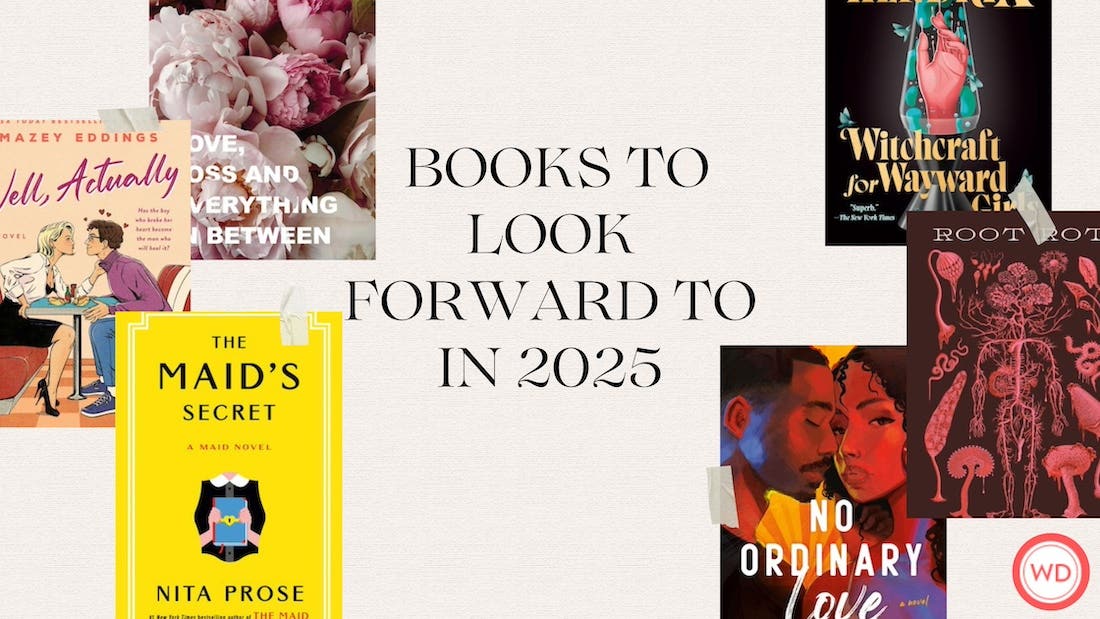Writing Mistakes Writers Make: Oversimplified Characters
The Writer’s Digest team has witnessed many writing mistakes over the years, so we’re starting this series to help identify them for other writers (along with strategies for avoiding the mistake). This week’s writing mistake writers make is oversimplifying your characters.
Everyone makes mistakes—even writers—but that's okay because each mistake is a great learning opportunity. The Writer's Digest team has witnessed many mistakes over the years, so we're starting this series to help identify them early in the process. Note: The mistakes in this series aren't focused on grammar rules, though we offer help in that area as well.
Rather, we're looking at bigger picture mistakes and mishaps, including the error of using too much exposition, neglecting research, or researching too much. This week's writing mistake writers make is oversimplifying your characters.
Writing Mistakes Writers Make: Oversimplified Characters
You open up your email one night and see that you have a new message from your beta reader. Eagerly, you click it open and see what they have to say.
“Really loved that twist at the end!” you read, “But I have to say, the biggest issue in this draft is your main character. There wasn’t much to her. Even when we got to the climax, I didn’t really care how it was going to go one way or the other.”
How can this be? You adore your heroine. She’s spunky, tenacious, and always has the right answer.
You open up your manuscript and start re-reading. You still see all the things you loved about your heroine … but now you’re seeing what your reader meant. She’s not complex enough; there isn’t much to her beyond the surface traits you needed to get your plot from point A to point B.
Do not despair! This is a very common mistake that most writers will make, especially in the first draft or so of their manuscript. All you need to do is create a more dynamic, complex character.
Mistake Fix: Make Your Characters Dynamic
There are four key elements that always help me to avoid oversimplifying my characters:
1. Identify what your character wants and what they need
A common mistake is assuming that your character’s wants and needs are the same things. In real life, this is rarely the case. Disney movies are always my go-to for analyzing this type of tension because they’re fairly obvious. Think of Merida in Brave. She wanted to change her fate; she needed to feel heard and understood by her parents. Or Carl from Up. He wanted to move his house to the South American wilderness, but he needed to not feel so alone after his wife’s death.
You see, most of our characters will think that what they want is what they need. This is the natural conflict of the story—they might think, “If I do/find/get X, then I’ll get Y.” But rarely does this work out the way they plan it to. That’s where the story lies. An easy way to plot this out is to ask yourself several questions: Where is your character at the beginning of the story? Where do they want to go? Where will they end up? Will they get what they need where they end up?
If you’re drawing a blank for your character, you can practice by plugging in information from some of your favorite stories. For example, let’s take Elsa from the first Frozen film (I wasn’t kidding about Disney being an easy target for this!). Where was Elsa at the beginning? Afraid of her powers and of hurting others (read: isolated). Where does she want to go? She wants to disappear into the wilderness to be alone with her powers. Where will she end up? As the well-loved queen of Arendelle who uses her powers to the delight of her people. Will she get what she needs where she ends up? Yes, she feels secure, fulfilled, and in control.
2. Give them contradictions
Unpredictability is a great way to keep your characters interesting. An easy way to do that is to give them a contradiction. We believe the hero of an epic will be brave … but what if they aren’t? And a relationship counselor who can’t find themselves in a stable relationship is more enticing than a relationship counselor who has been really successful in love.
Ronan Lynch of Maggie Stiefvater’s The Raven Cycle series is one of my favorite contradictory characters. He’s blunt, rude, and rough with just about everyone, but he’s also incredibly thoughtful and tries to be helpful when he notices things aren’t right with his friends. This makes him more realistic and gives readers something to emphasize with when he might be unlikeable as a character otherwise.
My favorite way to explore potential character contradictions is to describe my character twice: once to fall in love with them and once to really dislike them. This allows me to explore different aspects of their personality and figure out what makes sense for their character and what doesn’t. For example, I could have a character who is musical and whimsical, and watching them play their instrument takes your breath away. But then I could show how disorganized and thoughtless they can be when the opportunity to play for a large crowd means that they’re very late for a friend’s birthday dinner.
3. Give them flaws—but keep them sympathetic
Everyone has flaws but making your characters people that your readers can either relate to or understand is key to making your character dynamic and sympathetic. Even if we don’t want the reader to necessarily like our characters, we probably want them to be rooted for. Although there are always exceptions to the rules, this is usually what will keep the reader engaged in the story.
The easiest way to do this is to give the character a balance of positive and negative traits. They might be very proud, but also very kind. They might be a coward, but they always manage to stand up for their friends in the end. By creating a balance, you’re giving this character complexity that mirrors real life while also giving the reader something to sympathize with.
To keep track of your character’s flaws and strengths, it might help to create a list with flaws on one side and strengths on the other. Then, as you contemplate the list and your character’s backstory, you can select some that work best for you. For example, a hero that is both brave but over-confident can work to get them in and out of trouble. Or a sidekick who is loyal but jealous can create interesting interactions with other characters.
4. Allow them to be vulnerable
The final tip to keep your characters from being too simple is to allow them to be vulnerable with the reader. By giving your character the chance to be emotionally naked in front of the reader, it allows for them to be a compelling and sympathetic character. We see their struggle and we empathize with it.
The Changeling by Victor LaValle is a novel with a really wonderful view of vulnerability. The main character is Apollo Kagwa, whose father had up and disappeared when Apollo was young. The novel follows Apollo’s life and shows him meeting the love of his life, Emma, their courtship, the early years of their marriage, and their foray into parenthood. Because we see how deeply Apollo’s absent father has affected him, we feel his fear of and dedication to fatherhood deeply. Because we have seen Apollo’s most vulnerable moments, we willingly face every obstacle with him and root for him along the way.
Using a character’s fear to reveal their vulnerability is a great tool a writer can use to easily make their characters more dynamic. What does your character fear? Is it rejection or loss or lack of control? What would happen if you put them in a position in which they had to face their fear head-on? This doesn’t have to be a first-page or even first-chapter event, but creating space in your story for your character to face this fear and either overcome it or get crushed by it will automatically allow your reader to see them as sympathetic.
Here are some resources to get you started:
- Mistake 42: Not Recognizing Your Characters' Needs and Flaws
- When Flaws Go Too Far: Avoiding Unlikeable Characters
- An Illustrated Guide to Dynamic Characters
- Tips for Creating Fictional Characters
- Learn How To Motivate Your Characters
And if you do better with a writing community, try one of our monthly challenges:
The next time an email comes through from your reader, you’re a little more hesitant. You want them to love your main character as much as you do—you want to do your story justice. When you read, “Loved the addition of the brother; her devotion to him and how overly-protective she was really fed into an overall fear of loneliness that made the ending much more poignant,” you know you’ve hit the jackpot.
Since obtaining her MFA in fiction, Moriah Richard has worked with over 100 authors to help them achieve their publication dreams. As the managing editor of Writer’s Digest magazine, she spearheads the world-building column Building Better Worlds, a 2023 Eddie & Ozzie Award winner. She also runs the Flash Fiction February Challenge on the WD blog, encouraging writers to pen one microstory a day over the course of the month and share their work with other participants. As a reader, Moriah is most interested in horror, fantasy, and romance, although she will read just about anything with a great hook.
Learn more about Moriah on her personal website.








